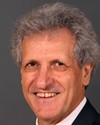For the public who may be readers of the blues, I want to set the record straight. We were talking earlier about the incredible cost associated with putting a high-speed rail system into Canada. Someone said that Canadians in 1995 would have been looking at $15 billion, an astronomical figure. But the 1995 study that we were given sets the figure for the Toronto-to-Montreal segment at $5.4 billion.
With respect to assimilation of land and associated issues, the study we were given says that “No high-speed rail system has ever been designed that currently operates at speeds of over 200 kilometres per hour in climatic conditions comparable to those in Canada. Such conditions include freeze-thaw cycles, extremely low temperatures, and wide temperature variations, either daily or seasonally.”
It goes on to give a little bit of a discussion about the weather conditions. It says that “In France there is practically no tolerance for vertical movement of the high-speed rail tracks. This is significantly different from Canadian rail or road conditions. The major challenge remains in the design and construction of stable track structures under the demanding freeze-thaw and geotechnical conditions found in the Quebec-Windsor corridor.”
In Ontario we have significant differences of geography, even between Toronto and Montreal. In Ontario, we now have the protection of the Oak Ridges Moraine legislation of 1998, which is going to affect anything that goes on in this study. Highway 404 goes directly up the east side of my riding, between Aurora and Newmarket. The extension would go north around Lake Simcoe. This is in the planning stages and has been announced several times, but the environmental assessments have been holding it up for years.
When we're looking at total costs, are we considering all of these factors in the $15 billion? Are any environmental assessments that have been done in the past applicable on a go-forward basis?



